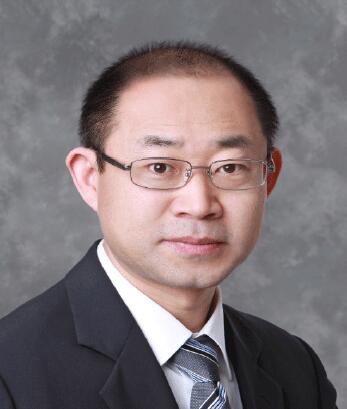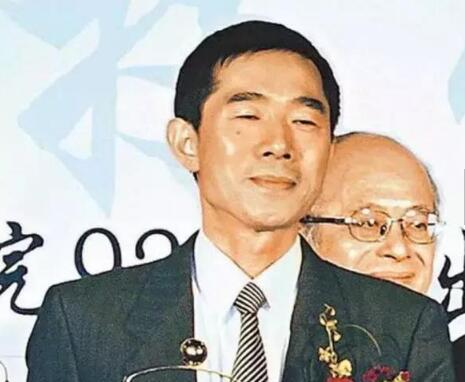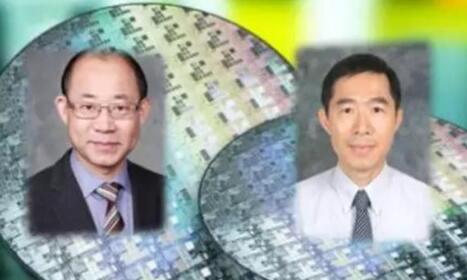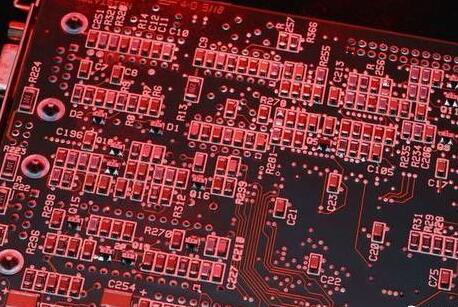The relationship between Zhao Haijun and Liang Mengsong
Zhao Haijun, CEO of SMIC. He received his bachelor's and doctorate degrees in electrical engineering from Tsinghua University in Beijing and his MBA from the University of Chicago. Joined SMIC in October 2010 and quickly grew into a senior company leader. In April 2013, Zhao Haijun served as executive vice president and chief operating officer. In July of the same year, he served as general manager of the SMIC North Joint Venture.
On May 10, 2017, SMIC announced that CEO Qiu Ciyun resigned for personal reasons, and Zhao Haijun became the new CEO of the company. Effective from May 10, 2017.

Liang Mengsong, 65, graduated from the Department of Electrical Engineering and Computer Science at the University of California, Berkeley, and obtained his Ph.D., a Fellow of the Institute of Electrical and Electronics Engineers. He was a senior R&D director at TSMC from 1992-2009.
The SMIC press release did not mention that Liang Mengsong had served the experience of TSMC and Samsung in the past. He only said that Liang Mengsong has more than 33 years of experience in the semiconductor industry, engaged in the development of memory and logic technology, and has more than 450 semiconductor patents. Published more than 350 technical papers.
His Korean wife was also a semiconductor engineer, a colleague at work in the United States, and a great girl who once worked as a flight attendant. During his seventeen years in TSMC, he has achieved great success.
In 2003, TSMC defeated IBM with its own technology, and made a name for itself in the world's 130-nanometer "copper process". The Executive Yuan praised the TSMC R&D team. At that time, Liang Mengsong, who was in charge of advanced modules, ranked second, and the credit was second only to senior vice president of research and development, Jiang Shangyi.
Liang Mengsong was in TSMC for 16 years. In 2008, he joined Taiwan from TSMC. TSMC can rank in the top five R&D genius. In the database of the US Patent Office, Liang Mengsong has invented 181 semiconductor technology patents, all of which are the most advanced. The most professional and most important advanced process technology research and development, was once the left and right hand of Zhang Zhongmou.

On October 16, SMIC held an interim board meeting, officially announcing that Liang Mengsong became the co-CEO of SMIC, and it will take effect from (16) onwards. The industry has speculated that more than a year of questions about Liang Mengsong’s appointment has finally been determined, and the outcome of the two CEOs is unexpected and reasonable.
Liang Mengsong’s inauguration opened the “double CEO†system of SMIC’s CEO, and it was also the first case among Chinese semiconductor companies. In the future, Liang Mengsong, like Zhao Haijun, directly responsible and reported to the board of directors.
According to the announcement issued by SMIC, Dr. Liang has signed a director service contract with the company (which stipulates the terms of appointment as an executive director) for a term beginning on October 16, 2017 and ending at the annual general meeting of the company in 2019. . In addition, Dr. Liang will also enter into a labor contract with the company (which provides for the appointment of a co-CEO), with a recommended term of three years.
Dr. Leung has been appointed as the co-CEO and does not need to be re-elected by shareholders and does not have to retire by rotation. As the company's co-CEO and executive director, Dr. Leung is entitled to an annual cash remuneration of $200,000 after taxes. The remuneration package of the Company has been determined by the Board of Directors in accordance with the remuneration policy of the Company's Directors and Senior Management and the recommendations of the Remuneration Committee of the Board. The equity aspect has not been announced.
So far, SMIC's board of directors will include four executive directors, including: Zhou Zixue (Chairman), Zhao Haijun (co-CEO), Liang Mengsong (co-CEO), Gao Yonggang (CFO). This change will bring the company's management team closer to the board of directors and communicate more effectively.
SMIC spokesman and executive vice president Li Zhi said in an interview with Jiwei. The participation of Liang Mengsong has injected fresh blood into SMIC's technology development plan, technical service capability, technical level and advanced management concepts. Over the years, SMIC has been actively pursuing world-class companies in terms of technology, management, and scale. His participation is a good foundation and growth factor for the company's future development to reach new heights. Li Zhi emphasized that both Co-CEOs said on the board that 1+1 must be greater than 2.
The dual CEO is the first in SMIC and the first in the Chinese semiconductor industry. For the future division of the two, Li Zhi said that at this stage, the two will work together, Meng Songxin joins the company, and it takes a while to get familiar with the company's situation, and the two need more. His participation will also solve the long-term transition period of SMIC in the past by the CEO as the top executive of the R&D department.
In 2010, SMIC was headed by the chief operating officer, Yang Shining, and Yang Shining was appointed as the CEO of Qiu Ciyun. After Qiu Ciyun’s personal factors resigned as CEO, he was handed over to CEO Zhao Haijun. Previously, SMIC's top research and development department was Dr. Li Xuwu, vice president of technology research and development. He left SMIC in 2016. The SMIC Board of Directors believes that a manager with a stronger technical background is still in charge. After the transition period, I believe that the division of labor between the two CEOs should be clear.
Similar to SMIC, it was the "double-headed system" thrown by TSMC Zhang Zhongmou at the beginning of the month. In the future, Liu Deyin will take over the position of chairman, and Wei Zhe will take over the position of president, and the future chairman of Liu Deyin will serve as chairman. Not only the company's final decision-makers, but also the company's external, trend-oriented, market-oriented, and government and social affairs leaders, the content of its work will be responsible to the board of directors. As for the position of president of Wei Zhejia, it is the internal control of the company's operations, management and other matters, including the financial part, and then report to the chairman of the board, and then to the board of directors.
Li Zhi emphasized that SMIC's "double CEO" is a parallel peer relationship. Meng Song has just joined the company and jointly managed the company. This model is more suitable for the status quo of SMIC. In this regard, Wang Weihui, a micro-network, commented that TSMC's dual CEOs and Huawei's CEOs are now rotating. Now SMIC has also introduced dual CEOs. Generally, many CEOs need a strong chairman to sit in the town. In 1931, Zhang Zhongmou just retired, 1944. Ren Zhengfei is still planning, and Zhou Zixue, born in 1956, is actually in the same year. Zhou Zixue, who was born as the chief economist of the Ministry of Industry and Information Technology, has shown more and more control over SMIC in the past two years. The recruitment of Liang Mengsong shows that it is very strong. Strategic vision and execution. Therefore, SMIC should have enough confidence to face the differences that may arise from “double CEOsâ€.

Liang Mengsong's technical strength has been well recognized in the industry. At TSMC, TSMC beat IBM at 130nm, and Liang Mengsong made a great contribution. After joining Samsung in 2011, Samsung's process directly entered the 14nm FinFET process from the 32nm/28nm planar process and began mass production at the end of 2014. . The industry is very concerned about the contribution of Liang Mengsong to the advanced technology of SMIC.
In this regard, Li Zhi analyzed the episode. Firstly, it is further improved and improved at the 28-nm node. Although SMIC's 28-nanometer products are gradually maturing under the PolySion process, the proportion is gradually increasing, but it is still difficult to produce high-end HKMG mass production, and currently only 7% of revenue comes from 28 nm process. Liang Mengsong's skills, experience, philosophy and cultural capabilities are believed to accelerate and improve the relatively mature 8-inch process. It will also help more in the improvement and improvement of mature processes, and effectively improve the overall R&D capabilities of SMIC.
Second, at the 14-nm node, in June 2015, SMIC and Huawei, Qualcomm, and Belgian Microelectronics Research Center (IMEC) jointly entered the 14nm FinFET process. It is expected to invest in risky trial production in 2018 and scale in 2019. Production. With the further enhancement of resource allocation and technical strength, the 14-nm time course is believed to accelerate.
Third, at the 7-nanometer node, EMIC is still at the pre-research stage, and EUV is still the biggest challenge. The original plan of SMIC is to complete the pre-research in 2020. The follow-up plan also needs to combine the needs of the market and customers, and cannot build a car behind closed doors.
For Liang Mengsong's participation, a major topic of concern to the industry is whether Samsung will set a barrier for Liang Mengsong to leave SMIC, and then take further action on Liang Mengsong's “prohibition of competitionâ€, just as TSMC treats Samsung and treats it. The aspect is also skeptical. Li Zhi emphasized that SMIC attaches great importance to the company's own intellectual property rights and the intellectual property rights of its peers. It needs to be protected and protects its intellectual property rights from being contaminated by others. On the other hand, before Liang Mengsong joined, the company has already done risk assessment in this area, and there is no such risk at present. SMIC has previously suffered losses in this area, so it will be more careful to deal with such problems.
As for whether Samsung and other companies will take some "retaliation" measures, Wang Yanhui believes that the size of these companies in the Chinese market should also be worried about being countered, so they will not dare to do such a move. It is worth noting that the mainland does not lack basic engineers, but the executives who have the skills, operations, management capabilities and international vision are still very scarce. In recent years, the rapid development of China's semiconductor industry, the demand for talents is becoming more and more urgent, and the overseas blockade of talents on the mainland is becoming more and more strict. Li Zhi pointed out that in addition to the addition of Liang Mengsong, the return of research and development vice president Zhou Meisheng.
In fact, every year, SMIC has dozens of overseas returnees, including technology, operation, management, etc. SMIC is a heroic attitude, and the booming domestic semiconductor industry will attract more global talents. . This is beyond doubt. For example, Liang Mengsong’s cash remuneration is only $200,000 after taxes, which is very low for an internationally renowned and powerful executive. Li Zhi said that this also proves that Liang Mengsong did not come to China because of money, but has the mission of realizing his own ideals. SMIC has a lot of space for its play, and more because of the call for the development prospects of China's semiconductor industry.

Low Rate Nicd Battery KPL Series
Established in 1956, during the China first five-year-plan, Henan Xintaihang Power Source Co., Ltd. (Factory No.755) was the first R&D and manufacturing enterprise in China in the field of alkaline storage batteries and modular power system and it was also the military factory which owned the most varieties rechargeable batteries in domestic. Taihang was located in national Chemistry and Physicals Power Source Industrial Park, Xinxiang City, Henan, China.
Low Dishcharge Rate Nickel Cadmium Battery, KPL10~KPL1200, Max. discharge current <0.5C.
The nickel–cadmium battery (NiCd battery or NiCad battery) is a type of rechargeable battery using nickel oxide hydroxide and metallic cadmium as electrodes. The abbreviation NiCd is derived from the chemical symbols of nickel (Ni) and cadmium (Cd).
Ni Cd Battery,110V Kpl 300Ah Battery,Kpl1000Ah Nicd Battery,Low Rate Nicd Battery Kpl Series
Henan Xintaihang Power Source Co.,Ltd , https://www.taihangbattery.com
